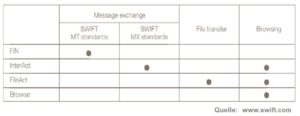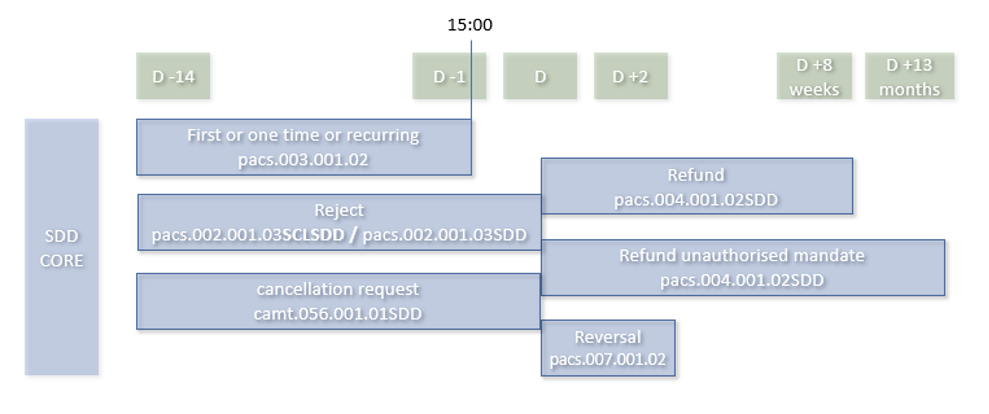An article by
Andreas Wegmann
Published on
11/02/2021
Updated on
11/02/2021
Reading time
2 min
The use of SWIFTNet is not only possible with different message formats (see article SWIFT MT MX), but also with different services. The various messaging services have arisen due to constant changes in professional and technical requirements. This article briefly introduces these SWIFT messaging services.

The basis of SWIFT messaging services: FIN
The most common SWIFT messaging service is SWIFT FIN. Here communication is only possible in the old SWIFT MT formats (based on ISO 15022). Typically, only individual transactions are transferred in FIN. The transmission takes place in “Store-and-Forward” mode, i.e. the sender loads the message into the system and it is only then forwarded to the recipient.
XML SWIFT messaging services: InterAct
The corresponding new version of FIN is InterAct, since XML messages are transmitted here. These modern so-called SWIFT MX formats are based on ISO 20022 and can contain much more descriptive data (another article gives an insight into this, using the example of pacs.008). In contrast to FIN, with InterAct the transmission can optionally also take place in real-time mode.
FileAct
As the name suggests, this service is designed to transfer files. Even large amounts of data such as documents and reports can be transferred quickly and easily. In addition to MT, MX and EDIFACT, the file formats can also be individual if the sender and recipient have agreed on this.
Browse
This service is essentially a secure HTTPS access to the websites within the SWIFT Secure IP Network (SIPN). Browse can thus be seen as a supplement to InterAct and FileAct. In Browse, no MT or MX messages are transmitted, but rather screen contents, for example.
Share




